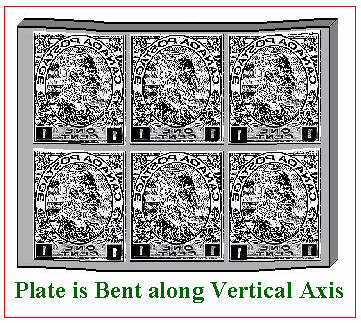 |
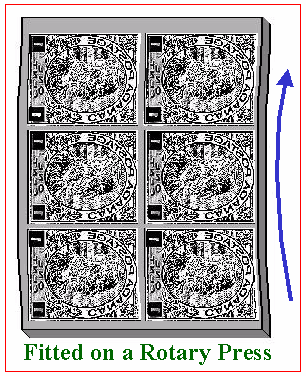 |
The booklet form of the one-cent green was only of the six-pane type, consisting of two rows of three. A total of 22 plates were laid down. The earlier plate arrangements were Type X (two groups of 84 subjects), and the later arrangements were Type Y1 (three groups of 84 subjects (see Formats). See Summary for more detailed information about the plates.
When rotary presses were used, plates were bent and joined to form a cylindrical printing surface, with the paper being fed in long streams. This technique decreased printing time considerably. In the case of the one-cent booklet panes, the early plates were bent on a vertical axis, which resulted in the panes being printed vertically, that is, on end as compared with the normal way of viewing a booklet pane.
 |
 |
As the wove paper was fed into the press in the normal way, with the grain running in a vertical direction towards the top of the plate ...
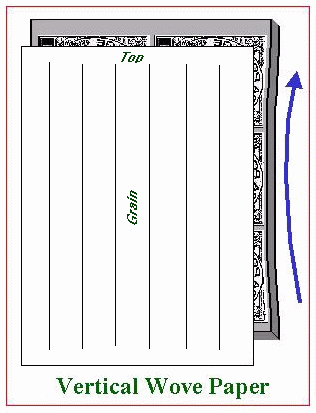 |
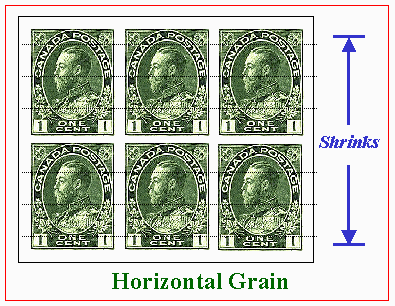 |
... the grain in the paper of the printed panes thus ran horizontally across the stamps. This in turn caused shrinkage in the paper to occur vertically as it dried, with the result that these stamps are shorter than normal. (See Method of Printing for a more complete explanation.)
The later plates, which contained more subjects (three groups of 84), were bent along the horizontal axis; hence, the booklet panes were printed horizontally on vertical wove paper, resulting in stamps that were the same size as their sheet-format counterparts.
The bending of the plates tended to produce vertical or horizontal hairlines depending on the direction in which the plates were bent. This resulted in the application of fine hairlines being transferred to the printed booklet panes in both vertical or horizontal directions.
The one-cent booklet types, therefore, may be categorized in terms of combinations of vertical and horizontal wove paper, as evidenced by hairlines or shortness of the stamps, and whether the original or retouched die was used.
A few retouches associated with the strengthening of the upper right vertical spandrel line, and minor re-entries have been reported.
There are two main shades: deep blue green from the early printings and yellow green from the later printings.
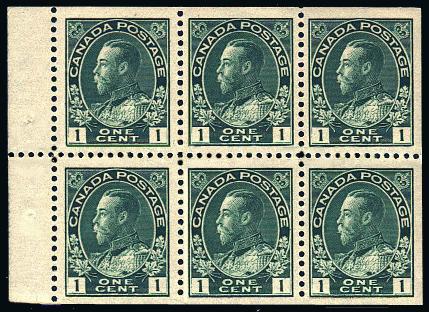
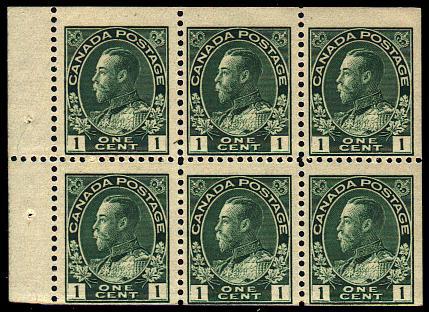
One Cent Yellow Green Booklet
Updated: 5 Oct 97